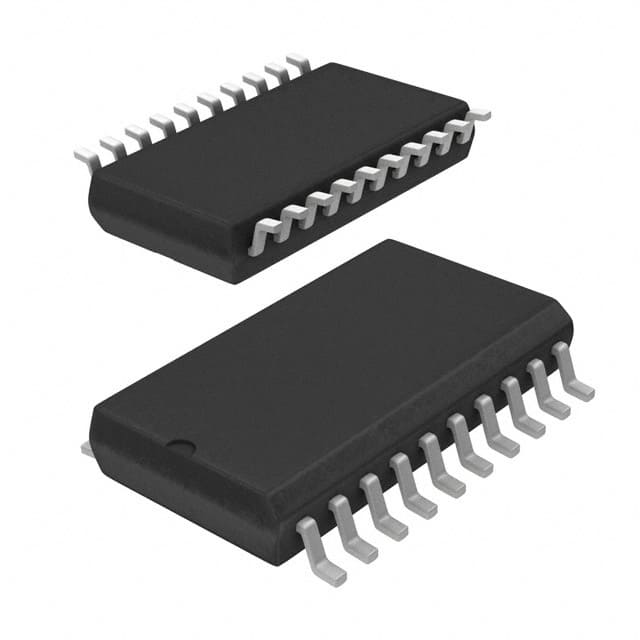Viz Specifikace pro podrobnosti o produktu.

Encyclopedia Entry: 74VHC541D-Q100J
Product Overview
Category
The 74VHC541D-Q100J belongs to the category of integrated circuits (ICs) and specifically falls under the family of VHC logic gates.
Use
This product is commonly used in digital electronic systems for signal amplification, buffering, and level shifting purposes. It serves as a non-inverting octal buffer/line driver with 3-state outputs.
Characteristics
- High-speed operation: The 74VHC541D-Q100J operates at high speeds, making it suitable for applications requiring quick signal processing.
- Wide voltage range: It can operate within a wide voltage range, typically between 2V and 5.5V, allowing compatibility with various digital systems.
- 3-state outputs: The device offers three output states - high, low, and high impedance - providing flexibility in controlling the flow of signals.
- Low power consumption: The IC is designed to consume minimal power, making it energy-efficient.
Package and Quantity
The 74VHC541D-Q100J is available in a standard 20-pin SOIC (Small Outline Integrated Circuit) package. It is commonly sold in reels or tubes, with a typical quantity of 250 units per reel/tube.
Specifications
- Supply Voltage Range: 2V to 5.5V
- Input Voltage Range: 0V to VCC
- Output Voltage Range: 0V to VCC
- Maximum Operating Frequency: 125 MHz
- Propagation Delay Time: 4.5 ns (max)
- Output Current: ±8 mA
Pin Configuration
The 74VHC541D-Q100J has a total of 20 pins, which are assigned specific functions as follows:
- GND: Ground
- A1: Input A1
- A2: Input A2
- A3: Input A3
- A4: Input A4
- A5: Input A5
- A6: Input A6
- A7: Input A7
- OE: Output Enable
- Y1: Output Y1
- Y2: Output Y2
- Y3: Output Y3
- Y4: Output Y4
- Y5: Output Y5
- Y6: Output Y6
- Y7: Output Y7
- VCC: Power Supply
- NC: No Connection
- B1: Input B1
- B2: Input B2
Functional Features
The 74VHC541D-Q100J offers the following functional features:
- Non-inverting buffer/line driver: It amplifies and buffers input signals without changing their logic levels.
- 3-state outputs: The device can be enabled or disabled, allowing the outputs to be in a high impedance state when not required.
- High-speed operation: The IC operates at high frequencies, enabling rapid signal processing.
- Wide voltage range: It can handle a broad range of input and output voltages, making it versatile for various digital systems.
Advantages and Disadvantages
Advantages
- High-speed operation enables quick signal processing.
- Wide voltage range allows compatibility with different digital systems.
- Low power consumption makes it energy-efficient.
- 3-state outputs provide flexibility in controlling signal flow.
Disadvantages
- Limited number of inputs and outputs (8 each).
- May require additional components for complex applications.
Working Principles
The 74VHC541D-Q100J works based on the principles of CMOS (Complementary Metal-Oxide-Semiconductor) technology. It utilizes a combination of NMOS (N-channel Metal-Oxide-Semiconductor) and PMOS (P-channel Metal-Oxide-Semiconductor) transistors to achieve its functionality. The inputs are buffered and amplified, while the outputs can be enabled or disabled using the OE (Output Enable) pin.
Application Field Plans
The 74VHC541D-Q100J finds applications in various digital systems, including but not limited to: - Microprocessors and microcontrollers - Data communication systems - Memory interfaces - Industrial automation - Automotive electronics
Alternative Models
Several alternative models with similar functionality to the 74VHC541D-Q100J include: - SN74VHC541-Q1 - MC74VHC541 - CD74VHC541
These alternatives can be considered based on specific requirements, availability, and pricing considerations.
In conclusion, the 74VHC541D-Q100J is a high-speed non-inverting octal buffer/line driver widely used in digital electronic systems. Its characteristics, functional features, and wide application field make it a versatile choice for signal amplification and
Seznam 10 běžných otázek a odpovědí souvisejících s aplikací 74VHC541D-Q100J v technických řešeních
Sure! Here are 10 common questions and answers related to the application of 74VHC541D-Q100J in technical solutions:
Q: What is the 74VHC541D-Q100J? A: The 74VHC541D-Q100J is a high-speed octal buffer/line driver with 3-state outputs, designed for use in various digital applications.
Q: What is the operating voltage range of the 74VHC541D-Q100J? A: The operating voltage range is typically between 2.0V and 5.5V.
Q: What is the maximum output current of the 74VHC541D-Q100J? A: The maximum output current is typically 8mA per channel.
Q: Can the 74VHC541D-Q100J be used as a level shifter? A: Yes, it can be used as a level shifter to convert signals between different voltage levels.
Q: Does the 74VHC541D-Q100J have built-in protection features? A: No, it does not have built-in protection features. External resistors or diodes may be required for protection against overvoltage or ESD events.
Q: What is the propagation delay of the 74VHC541D-Q100J? A: The propagation delay is typically around 4.5ns.
Q: Can the 74VHC541D-Q100J drive capacitive loads? A: Yes, it can drive capacitive loads up to a certain limit. However, additional measures may be needed for larger capacitive loads.
Q: Is the 74VHC541D-Q100J suitable for high-frequency applications? A: Yes, it is designed for high-speed operation and can be used in high-frequency applications.
Q: Can the 74VHC541D-Q100J be used in automotive applications? A: Yes, the "Q100" designation indicates that it meets the automotive industry's requirements for reliability and performance.
Q: Are there any specific layout considerations for using the 74VHC541D-Q100J? A: Yes, proper decoupling capacitors, signal integrity practices, and minimizing trace lengths are important for optimal performance. The datasheet provides detailed guidelines for layout recommendations.
Please note that these answers are general and may vary depending on the specific application and conditions. It is always recommended to refer to the datasheet and consult with the manufacturer for accurate information.

